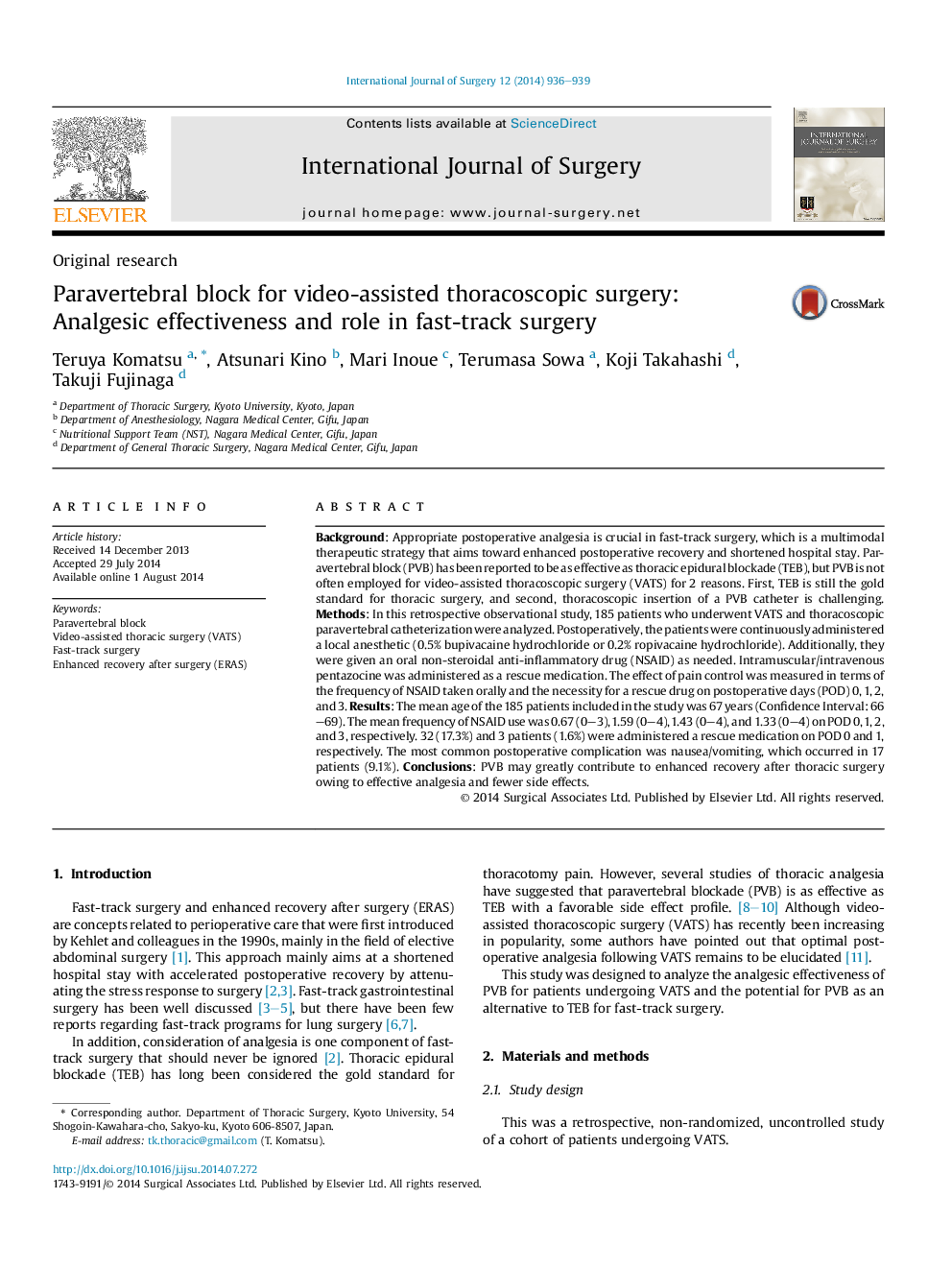| Article ID | Journal | Published Year | Pages | File Type |
|---|---|---|---|---|
| 6251716 | International Journal of Surgery | 2014 | 4 Pages |
Background: Appropriate postoperative analgesia is crucial in fast-track surgery, which is a multimodal therapeutic strategy that aims toward enhanced postoperative recovery and shortened hospital stay. Paravertebral block (PVB) has been reported to be as effective as thoracic epidural blockade (TEB), but PVB is not often employed for video-assisted thoracoscopic surgery (VATS) for 2 reasons. First, TEB is still the gold standard for thoracic surgery, and second, thoracoscopic insertion of a PVB catheter is challenging. Methods: In this retrospective observational study, 185 patients who underwent VATS and thoracoscopic paravertebral catheterization were analyzed. Postoperatively, the patients were continuously administered a local anesthetic (0.5% bupivacaine hydrochloride or 0.2% ropivacaine hydrochloride). Additionally, they were given an oral non-steroidal anti-inflammatory drug (NSAID) as needed. Intramuscular/intravenous pentazocine was administered as a rescue medication. The effect of pain control was measured in terms of the frequency of NSAID taken orally and the necessity for a rescue drug on postoperative days (POD) 0, 1, 2, and 3. Results: The mean age of the 185 patients included in the study was 67 years (Confidence Interval: 66-69). The mean frequency of NSAID use was 0.67 (0-3), 1.59 (0-4), 1.43 (0-4), and 1.33 (0-4) on POD 0, 1, 2, and 3, respectively. 32 (17.3%) and 3 patients (1.6%) were administered a rescue medication on POD 0 and 1, respectively. The most common postoperative complication was nausea/vomiting, which occurred in 17 patients (9.1%). Conclusions: PVB may greatly contribute to enhanced recovery after thoracic surgery owing to effective analgesia and fewer side effects.
